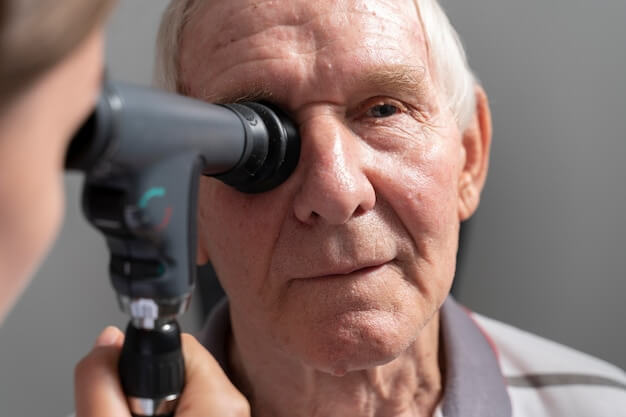Many patients with diabetes are painless when their blood sugar is high, and retinopathy is also silent and imperceptible. Therefore, the majority of diabetes patients should be reminded that after the diagnosis of diabetes, they must regularly screen the sugar network, and early diagnosis and treatment is the key. Early detection, early treatment and regular reexamination can avoid more than 90% of severe visual impairment.
Many patients with diabetes know the importance of controlling blood sugar, but they often ignore the changes in the eyes and seldom go to the ophthalmology examination. They don't think of going to the ophthalmology until one eye is out of sight, but it is often too late, and most of their eyesight is difficult to recover.
Generally, 7-8 years after getting diabetes, patients will slowly begin to develop diabetes retinopathy (referred to as "sugar net"). In serious cases, retinal hemorrhage, vitreous hemorrhage and retinal detachment will occur, which will cause permanent blindness.

What exactly is Sugar Net?
Diabetes retinopathy is a series of typical diseases caused by retinal microvascular damage caused by diabetes. it is a chronic progressive disease that affects vision and even causes blindness. The definition is difficult to understand. Let's look at the symptoms.
Sugar net has no obvious symptoms at the early stage, which is generally found through physical examination; With the development of the disease, patients with sugar web will have decreased vision and blurred vision; Visual distortion is also one of the symptoms of sugar web; The increase of floating objects in front of your eyes and dark shadows blocking your eyes are also symptoms of sugar webs.
Due to impaired vision and even blindness, the life and work of sugar web patients have been greatly affected. Blindness easily leads to inferiority, anxiety and depression in patients.
Early active treatment of sugar net can often preserve more vision and delay the occurrence of blindness. If it is found late and retinal detachment occurs, it will be difficult to recover vision.
Many patients with diabetes are painless when their blood sugar is high, and retinopathy is also silent and imperceptible.
Therefore, the majority of diabetes patients should be reminded that after the diagnosis of diabetes, they must regularly screen the sugar network, and early diagnosis and treatment is the key. Early detection, early treatment and regular reexamination can avoid more than 90% of severe visual impairment.
What inspection should be done to confirm the diagnosis? The retina, retinal capillary network, etc. are all in the fundus. Whether there are vascular leakage, new blood vessels, and retinal detachment in the retina, we can know from a fundus examination that fundus examination is an important magic weapon for sugar screening.
How can I treat Tangwang? Catch the king before catching a thief, and cure the root cause before curing a disease. The key to the treatment of Sugar Net is to control blood sugar, blood pressure and blood lipid. You must take medicine according to the doctor's advice; Light diet, moderate exercise, smoking cessation and other healthy lifestyles are the basis for controlling the "three highs".
In the early stage (stage I, stage II) of diabetic retinopathy, oral drugs are mainly used in ophthalmology to improve retinal blood circulation and reduce retinal damage.
When the diabetic retinopathy has progressed to stage III, the whole retina laser photocoagulation should be performed as early as possible to reduce the retinopathy of important parts by destroying the retina of unimportant parts, so as to improve the imbalance of retinal nutrition supply and demand. Laser photocoagulation of the whole retina can reduce the risk of vision loss by 50%.
Intravitreous injection of drugs (including anti angiogenesis drugs and glucocorticoids) is also an important treatment method to effectively improve the vision of patients with diabetic retinopathy. It is mainly applicable to macular edema of diabetic retinopathy and before vitrectomy. It can inhibit the growth of new blood vessels, prevent the formation of new blood vessels, eliminate macular edema, and reduce intraoperative bleeding.
Once glycoreticulosis develops to an advanced stage, there will be non absorbable vitreous hemorrhage, fibrous proliferating membrane, retinal detachment, etc., which can only be remedied by surgery to strive for some useful vision.
Therefore, if you have diabetes, the doctor will let you see your eyes. Early detection and early treatment is the only effective way for patients with diabetic retinopathy to maintain useful life vision!
